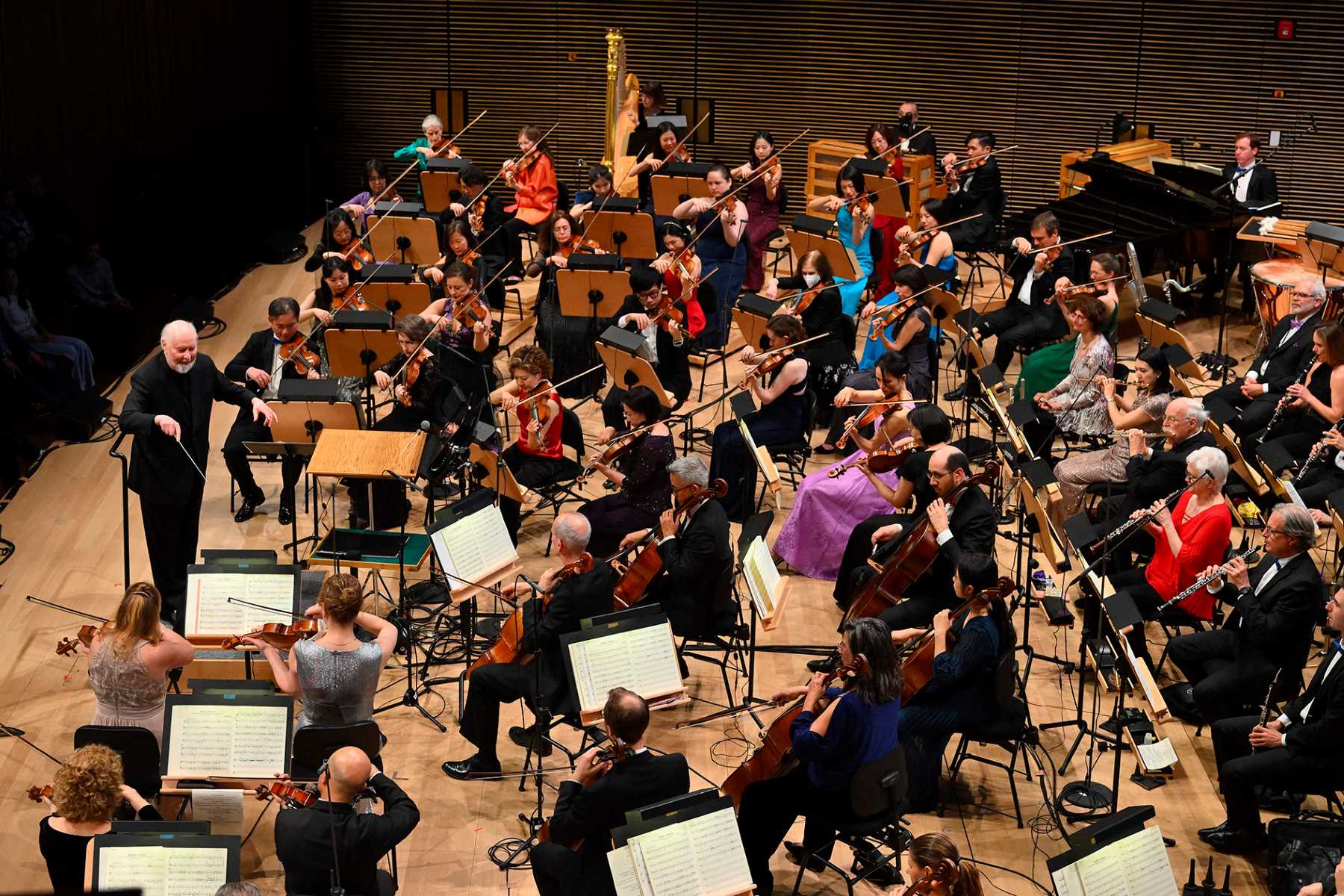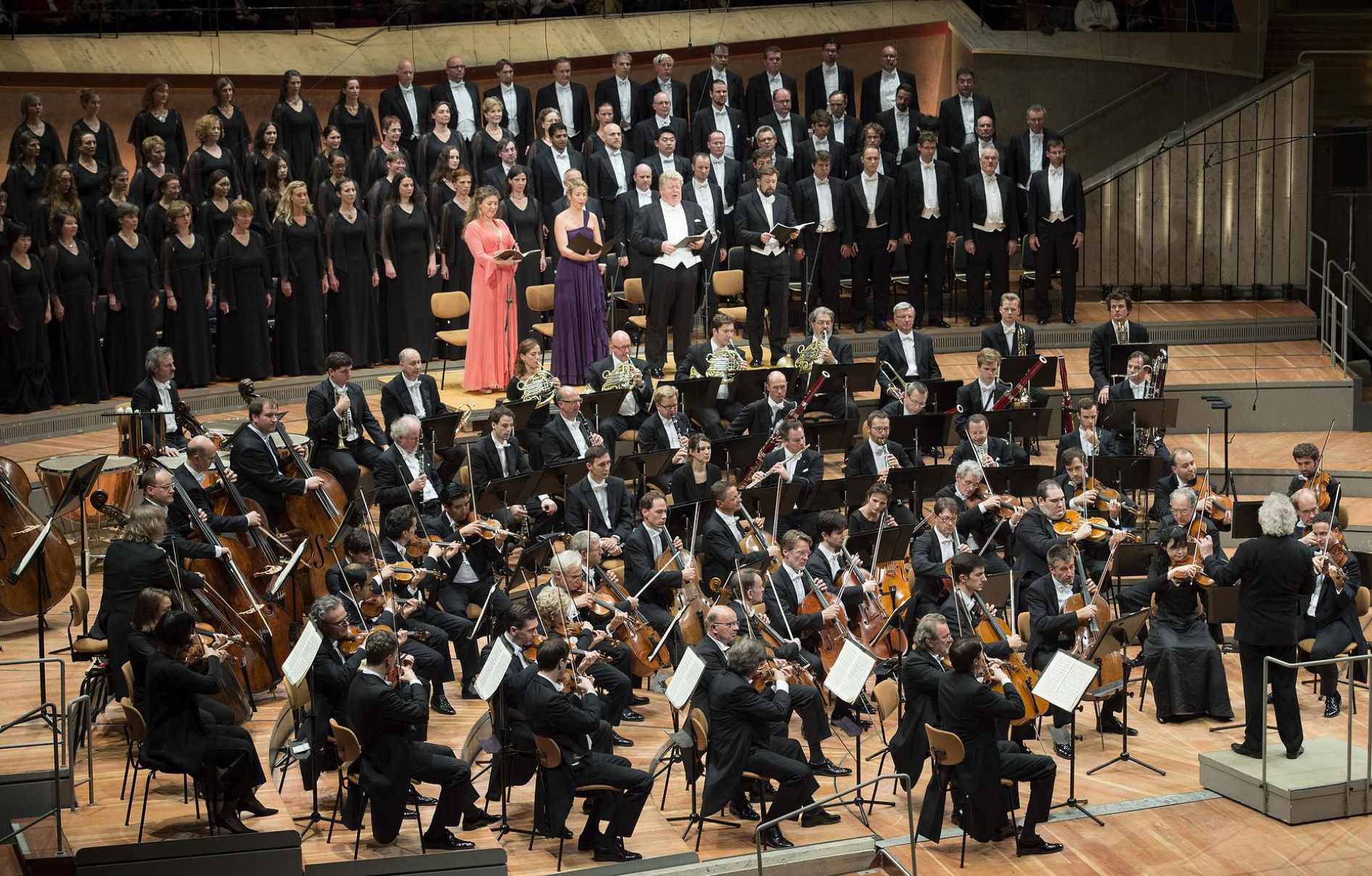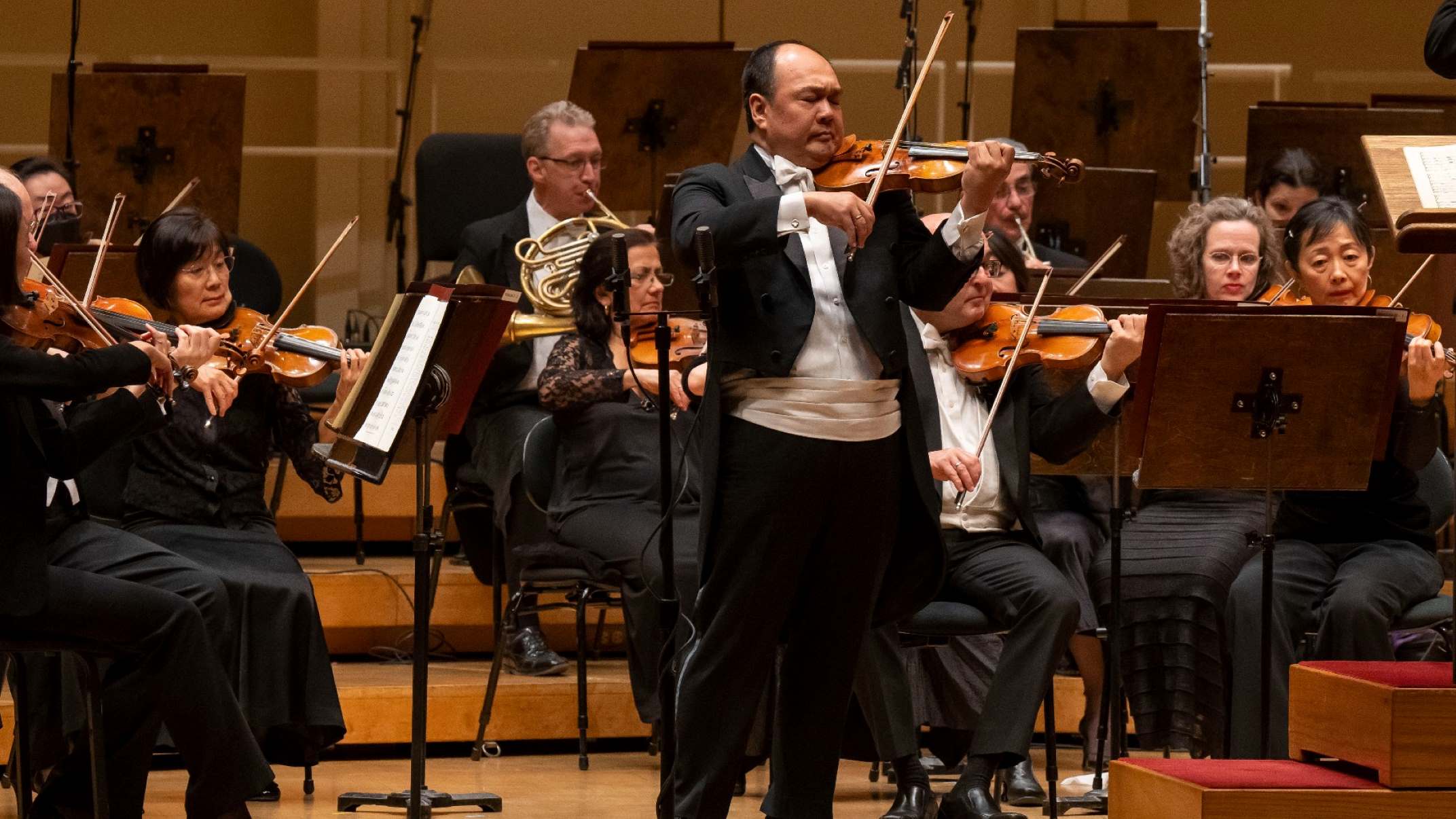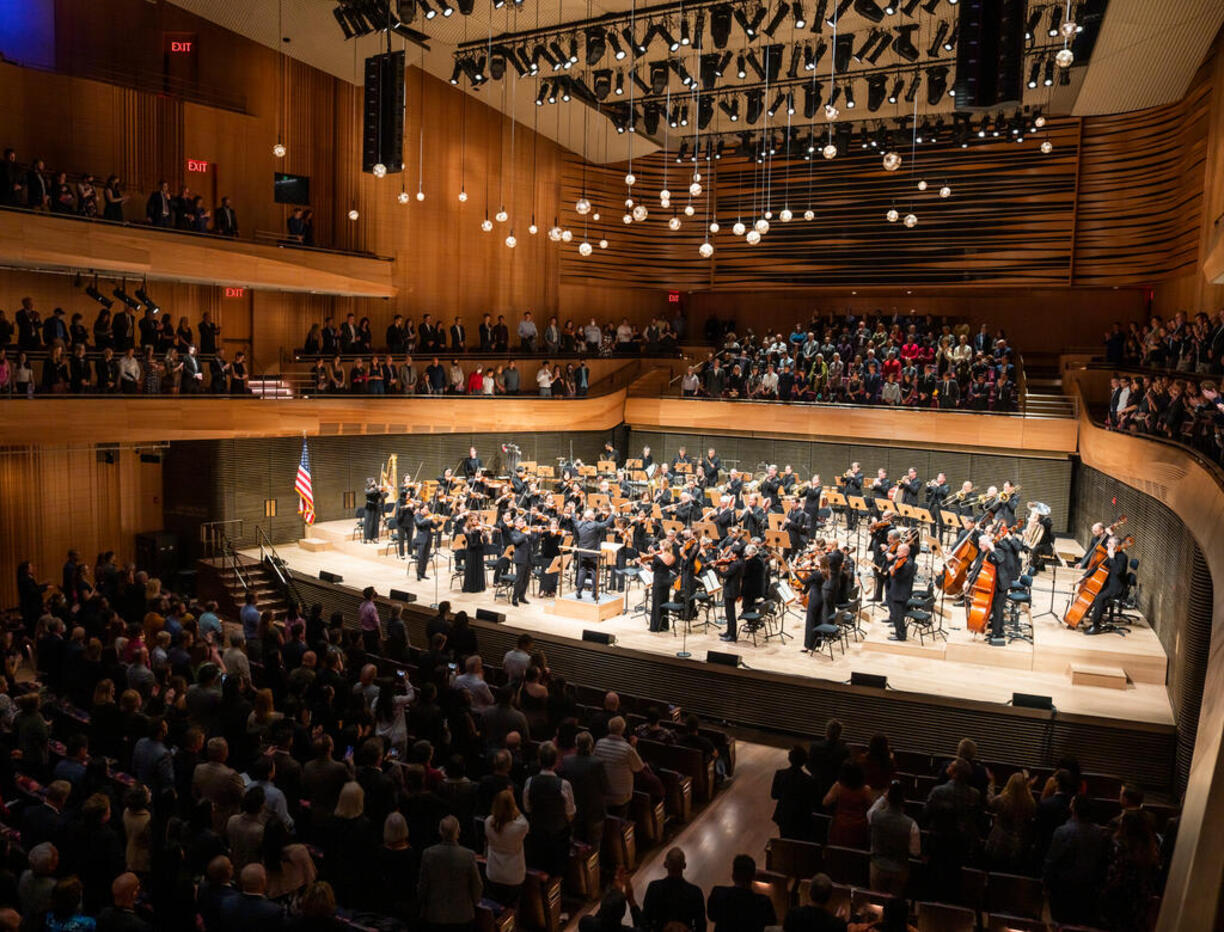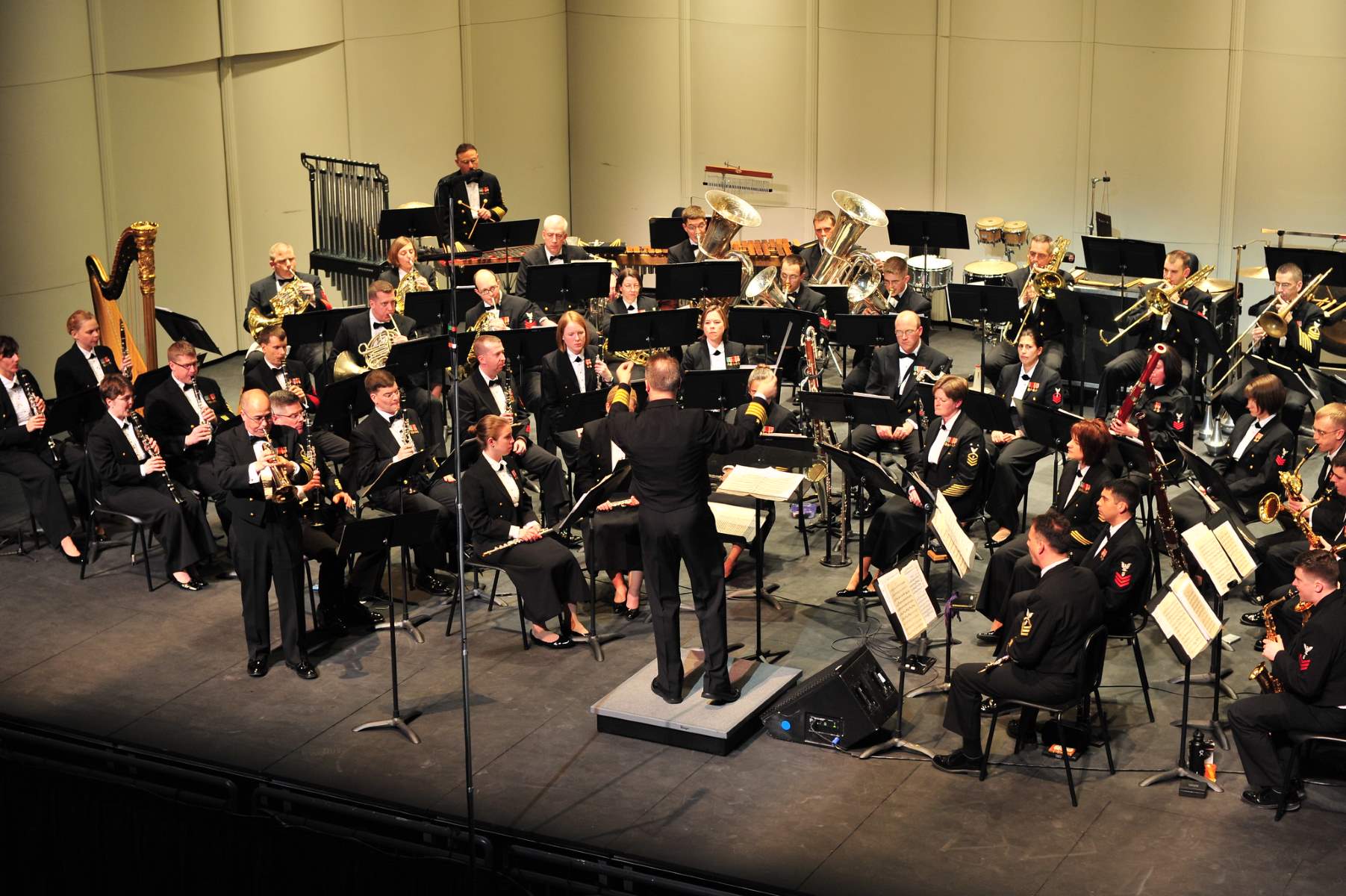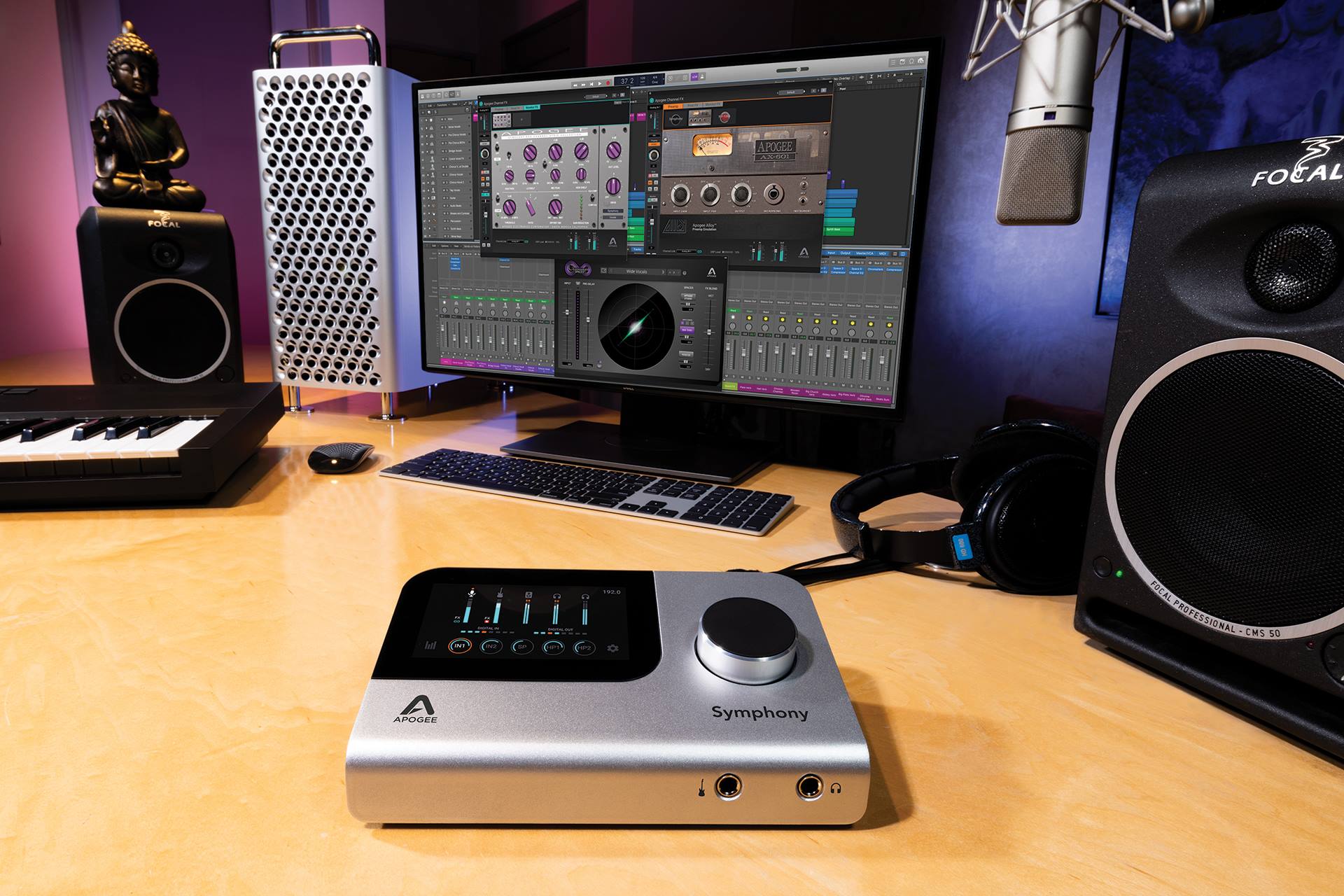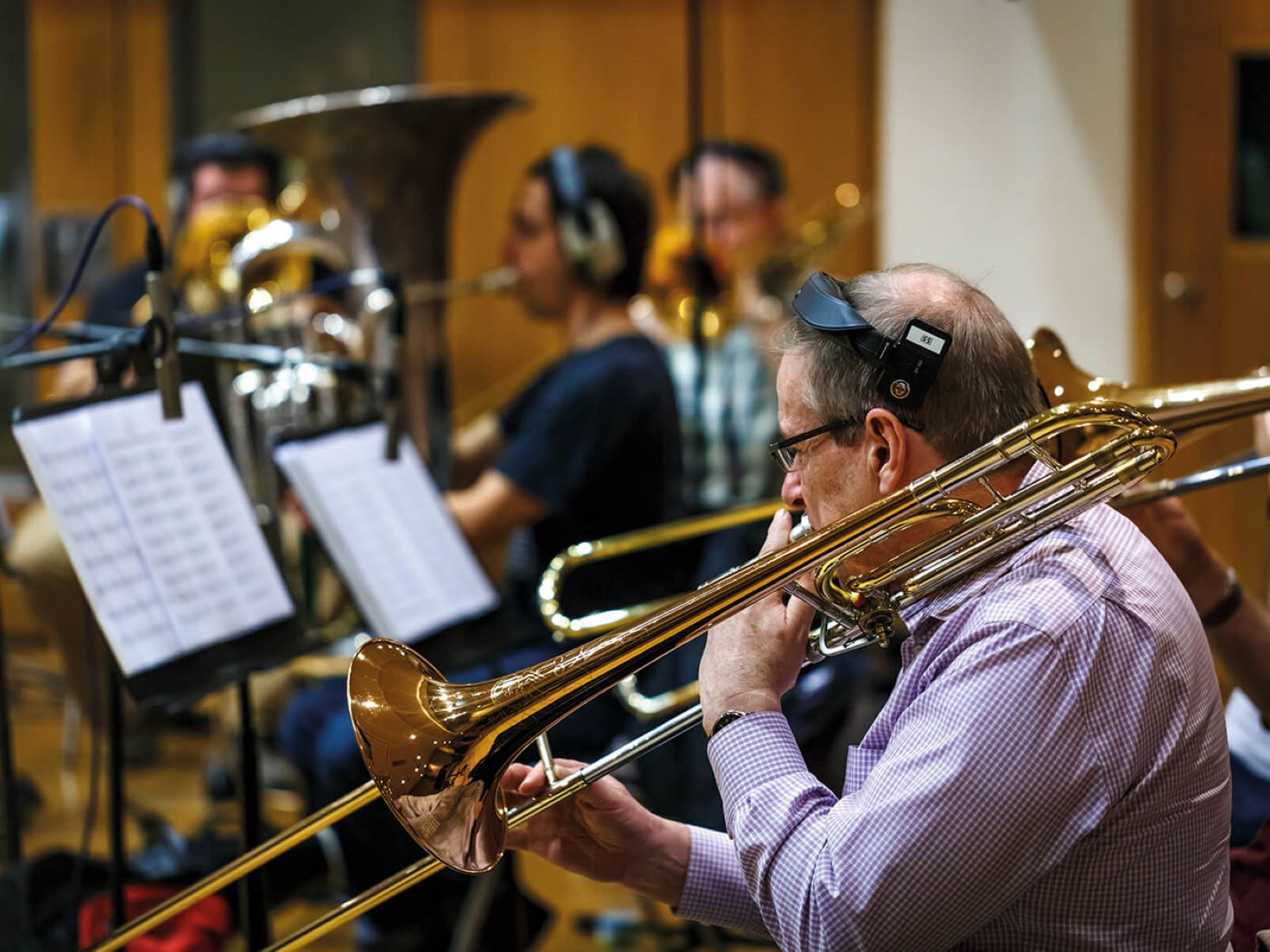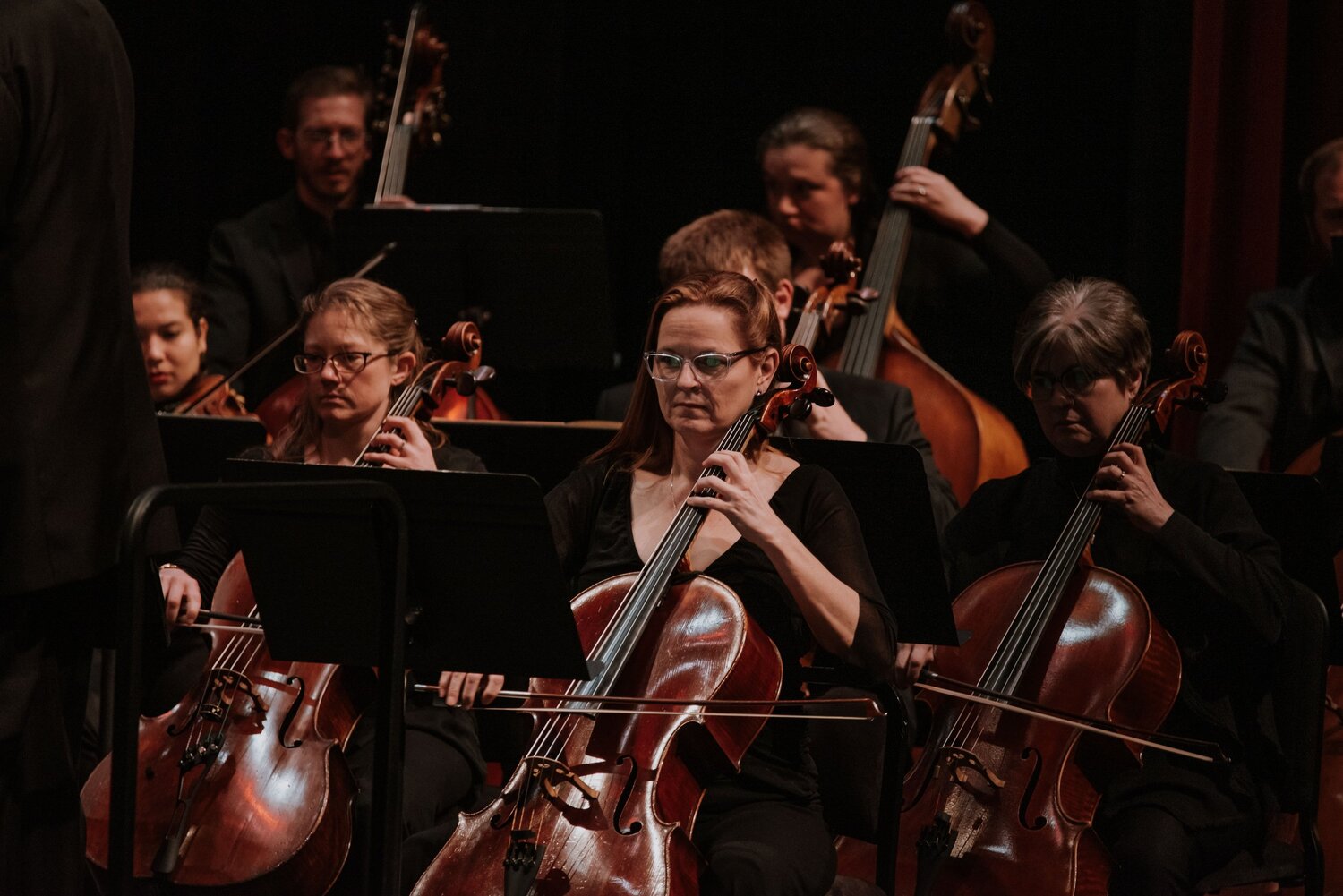Home>Production & Technology>Orchestra>How To Use BBC Symphony Orchestra
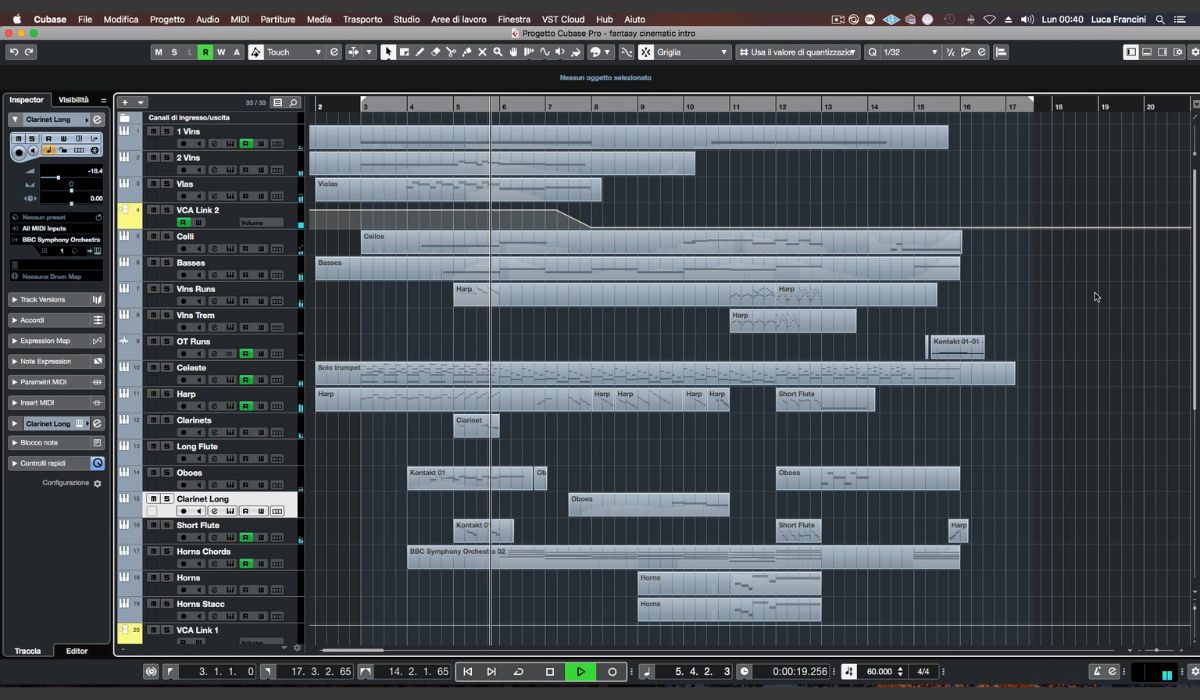

Orchestra
How To Use BBC Symphony Orchestra
Published: February 24, 2024
Learn how to use the BBC Symphony Orchestra to create beautiful orchestral music. Discover tips, techniques, and best practices for maximizing the potential of this powerful orchestral tool.
(Many of the links in this article redirect to a specific reviewed product. Your purchase of these products through affiliate links helps to generate commission for AudioLover.com, at no extra cost. Learn more)
Table of Contents
Introduction
The BBC Symphony Orchestra is a powerful and versatile virtual instrument that brings the grandeur and richness of a full symphonic orchestra to your fingertips. Whether you are a seasoned composer, an aspiring musician, or a music enthusiast, the BBC Symphony Orchestra offers a treasure trove of sonic possibilities to explore.
With its meticulously sampled instruments and advanced articulation controls, the BBC Symphony Orchestra empowers users to create breathtaking orchestral arrangements with unprecedented realism and depth. Whether you seek the soaring melodies of strings, the majestic resonance of brass, the emotive nuances of woodwinds, or the thunderous impact of percussion, this orchestral powerhouse delivers a symphonic experience like no other.
Designed to integrate seamlessly with leading digital audio workstations (DAWs), the BBC Symphony Orchestra provides an intuitive and immersive platform for realizing your musical vision. Its comprehensive library of instruments and articulations enables you to craft expressive and dynamic compositions across a wide spectrum of genres, from classical and cinematic to contemporary and experimental.
In the following sections, we will delve into the system requirements for running the BBC Symphony Orchestra, explore the installation process, navigate the user interface, delve into the intricacies of the instrument library, and uncover invaluable tips and tricks for harnessing the full potential of this orchestral marvel. Whether you are embarking on your maiden voyage with the BBC Symphony Orchestra or seeking to deepen your mastery, this guide will serve as your compass in the boundless sea of orchestral creativity.
System Requirements
Before embarking on your orchestral odyssey with the BBC Symphony Orchestra, it is crucial to ensure that your system meets the necessary requirements for seamless operation. The BBC Symphony Orchestra demands a robust computing environment to deliver its expansive array of instruments and articulations with uncompromising fidelity and responsiveness.
Minimum System Requirements
- Operating System: The BBC Symphony Orchestra is compatible with both Windows and macOS platforms, ensuring broad accessibility for users across different operating systems.
- CPU: A multi-core processor with at least 2.5 GHz clock speed is recommended to handle the computational demands of orchestral sample playback and real-time processing.
- RAM: A minimum of 8 GB of RAM is essential to accommodate the substantial memory requirements of the BBC Symphony Orchestra's expansive sample library and articulation data.
- Storage: The orchestra's sample library necessitates a substantial amount of storage space, with a minimum of 55 GB of available disk space to accommodate the installation and subsequent updates.
- Software: The BBC Symphony Orchestra operates as a plugin within digital audio workstations (DAWs) that support VST, AU, or AAX formats, ensuring seamless integration with popular music production software.
Recommended System Specifications
- Operating System: While the BBC Symphony Orchestra is compatible with various operating systems, users can maximize performance and stability by running it on the latest versions of Windows 10 or macOS.
- CPU: A high-performance multi-core processor, such as an Intel Core i7 or AMD Ryzen 7, clocked at 3.0 GHz or higher, can enhance the orchestral experience by delivering smoother playback and responsive articulation control.
- RAM: To accommodate larger orchestral arrangements and complex compositions, a recommended 16 GB or higher RAM configuration can provide headroom for seamless multitasking and resource-intensive music production tasks.
- Storage: With the ever-expanding scope of orchestral compositions, ample storage space, such as a fast SSD with at least 100 GB of free space, can expedite sample loading times and ensure efficient access to the orchestra's extensive instrument library.
- Audio Interface: Utilizing a high-quality audio interface can elevate the sonic fidelity of the BBC Symphony Orchestra, ensuring pristine audio output and low-latency performance for real-time instrument articulation and mixing.
By aligning your system with these requirements and recommendations, you can embark on a captivating musical journey with the BBC Symphony Orchestra, harnessing its orchestral prowess to realize your creative aspirations without technological constraints.
Installation
The installation process of the BBC Symphony Orchestra is designed to be straightforward, allowing users to swiftly integrate this orchestral powerhouse into their music production environment. Whether you are a seasoned composer or a budding musician, the seamless installation of the BBC Symphony Orchestra sets the stage for unleashing the full spectrum of orchestral expression within your compositions.
Upon acquiring the BBC Symphony Orchestra, users typically receive access to a dedicated installer, which streamlines the deployment of the orchestral library and associated components. The installer facilitates a guided setup process, ensuring that users can swiftly navigate through the necessary steps to bring the orchestra to life within their digital audio workstation (DAW) of choice.
As the installation commences, users are presented with options to specify the target directory for the orchestra's sample library and related files. This flexibility allows users to allocate the necessary storage space according to their system configuration and organizational preferences. By empowering users to tailor the installation path, the BBC Symphony Orchestra accommodates diverse workflows and storage arrangements, ensuring a seamless integration into the user's music production ecosystem.
Once the installation is complete, users can seamlessly access the BBC Symphony Orchestra within their DAW as a plugin, ready to infuse their compositions with the grandeur and emotive depth of a full symphonic orchestra. The intuitive integration of the orchestra as a plugin within leading DAWs such as Ableton Live, Logic Pro, and Cubase enables users to harness its orchestral palette with ease, opening the floodgates to boundless sonic creativity.
In addition to the core installation process, users may also have the opportunity to register their copy of the BBC Symphony Orchestra, unlocking access to updates, support, and exclusive content. This registration step, often facilitated through a user-friendly online portal, serves as a gateway to a thriving community of composers and musicians who are united in their passion for orchestral music and sonic innovation.
By seamlessly navigating through the installation process, users can swiftly immerse themselves in the captivating realm of orchestral composition, empowered by the unparalleled sonic capabilities of the BBC Symphony Orchestra. This seamless integration sets the stage for users to embark on a transformative musical journey, where the symphonic majesty of the orchestra becomes an integral part of their creative expression.
User Interface
The user interface of the BBC Symphony Orchestra encapsulates a harmonious fusion of intuitive design and comprehensive functionality, empowering users to navigate the orchestral landscape with seamless precision and creative fluidity. Upon integrating the BBC Symphony Orchestra into their digital audio workstation (DAW) of choice, users are greeted by a visually immersive interface that serves as a gateway to orchestral expression.
The interface of the BBC Symphony Orchestra is thoughtfully organized, presenting users with a cohesive layout that streamlines access to an extensive array of orchestral instruments and articulations. At the heart of the interface lies the instrument selection panel, where users can effortlessly browse and select from a diverse ensemble of strings, brass, woodwinds, percussion, and more. This intuitive instrument browser fosters a fluid workflow, allowing users to swiftly explore the sonic tapestry of the orchestra and select the perfect timbres for their compositions.
In addition to instrument selection, the user interface of the BBC Symphony Orchestra encompasses advanced articulation controls, enabling users to shape the expressive nuances of each instrument with precision and depth. Through intuitive articulation mapping and real-time parameter adjustments, users can imbue their compositions with lifelike phrasing, dynamic crescendos, delicate staccatos, and a myriad of other articulative nuances that breathe soulful realism into their orchestral arrangements.
Furthermore, the user interface provides seamless access to mixer controls, allowing users to sculpt the spatial and tonal characteristics of individual instruments within the orchestra. This comprehensive mixing environment empowers users to fine-tune the balance, panning, and sonic characteristics of each instrument, fostering a cohesive and immersive orchestral soundstage within their compositions.
The user interface of the BBC Symphony Orchestra is designed to be visually engaging and ergonomically efficient, ensuring that users can seamlessly navigate its expansive orchestral palette with ease and precision. By amalgamating intuitive instrument selection, advanced articulation control, and comprehensive mixing capabilities, the user interface serves as a conduit for users to orchestrate their musical visions with unparalleled expressiveness and sonic fidelity.
In essence, the user interface of the BBC Symphony Orchestra transcends traditional paradigms, inviting users into a realm where orchestral expression is not just a technical endeavor, but a deeply immersive and artistically enriching experience. It is within this interface that users can seamlessly channel their creative impulses, sculpting symphonic masterpieces that resonate with emotive depth and timeless allure.
Instrument Overview
The BBC Symphony Orchestra encapsulates a breathtaking array of meticulously sampled instruments, each meticulously crafted to capture the essence and emotive depth of a full symphonic ensemble. From the soaring melodies of the strings to the resplendent resonance of the brass, the orchestra's instrument library stands as a testament to sonic authenticity and expressive versatility.
Strings
The strings section embodies a rich tapestry of sonic expression, featuring the lush timbres of violins, violas, cellos, and double basses. Whether evoking tender lyricism, dramatic fervor, or ethereal elegance, the strings section offers a boundless palette of articulations, including legato, spiccato, pizzicato, tremolo, and more. With meticulous attention to detail, the strings capture the subtleties of bowing, vibrato, and dynamic phrasing, empowering users to weave intricate melodic tapestries and emotive textures within their compositions.
Brass
The brass section exudes commanding grandeur and regal resonance, encompassing the majestic presence of trumpets, trombones, French horns, and tubas. From triumphant fanfares to sonorous chorales, the brass instruments deliver a resounding impact, enriched with expressive articulations such as staccato, marcato, and dynamic swells. With a dynamic range that spans from thunderous fortissimos to delicate muted tones, the brass section infuses compositions with a captivating blend of power and nuance.
Woodwinds
The woodwinds section embodies a world of evocative timbres and nuanced phrasing, featuring the enchanting voices of flutes, oboes, clarinets, and bassoons. With an expansive palette of articulations, including legato, staccato, trills, and flutter-tonguing, the woodwinds breathe life into compositions with their lyrical melodies, agile runs, and expressive trills. Whether evoking pastoral serenity, whimsical playfulness, or haunting lyricism, the woodwinds section offers a kaleidoscope of tonal colors and emotive textures.
Percussion
The percussion section encompasses a diverse array of rhythmic vitality and textural richness, featuring an ensemble of orchestral drums, cymbals, timpani, and more. From thunderous rolls and thundering crescendos to delicate mallet passages and shimmering cymbal swells, the percussion instruments imbue compositions with rhythmic drive, dynamic impact, and atmospheric depth. With a wide range of articulations and dynamic controls, the percussion section serves as the rhythmic heartbeat of orchestral arrangements, adding visceral energy and dramatic punctuation to musical narratives.
Harp and Celeste
The orchestra's instrument library also includes the ethereal resonance of the harp and the celestial shimmer of the celeste, adding a touch of enchantment and celestial allure to compositions. The harp's cascading arpeggios, glissandos, and delicate plucks evoke a sense of ethereal elegance, while the celeste's crystalline tones and shimmering timbres infuse compositions with a transcendent, otherworldly quality.
In essence, the instrument overview of the BBC Symphony Orchestra unveils a vast sonic tapestry, inviting users to explore the expressive nuances and emotive depth of a full symphonic orchestra. With its meticulously crafted instruments and comprehensive articulation controls, the orchestra's instrument library serves as a boundless playground for sonic exploration and orchestral expression, empowering users to breathe life into their compositions with unparalleled realism and emotive resonance.
Using the Mixer
The mixer within the BBC Symphony Orchestra serves as a pivotal control center, offering users a comprehensive toolkit to sculpt the spatial, tonal, and dynamic characteristics of individual instruments within the orchestral ensemble. By delving into the intricacies of the mixer, users can harness the power of sonic manipulation, shaping the orchestral soundstage with precision and artistry.
Instrument Balancing and Panning
The mixer facilitates precise control over the balance and placement of instruments within the stereo field, enabling users to achieve a cohesive and immersive sonic panorama. By adjusting the volume levels of individual instruments, users can fine-tune the sonic balance, ensuring that each element of the orchestra resonates with clarity and presence. Additionally, the panning controls empower users to position instruments within the stereo spectrum, creating spatial depth and dimension within their compositions. Whether orchestrating a symphonic crescendo or crafting an intimate chamber arrangement, the mixer's balancing and panning capabilities provide a canvas for spatial expression and sonic cohesion.
Ambience and Spatialization
In addition to instrument balancing, the mixer offers controls for shaping the ambience and spatial characteristics of the orchestral ensemble. Users can leverage reverb and spatialization parameters to imbue the orchestra with a sense of acoustic presence and environmental depth. By tailoring the reverberant characteristics of individual instruments, users can evoke the grandeur of concert halls, the intimacy of chamber spaces, or the ethereal allure of distant reverberation. This spatial manipulation adds a layer of realism and emotive depth to orchestral compositions, enveloping listeners in a rich sonic tapestry that transcends traditional stereo playback.
Dynamic Processing and Expression
Furthermore, the mixer provides dynamic processing tools that empower users to shape the expressive dynamics of individual instruments within the orchestra. From subtle compression and EQ adjustments to dynamic range control and transient shaping, users can refine the tonal and dynamic characteristics of each instrument, fostering a nuanced and emotive sonic narrative. By harnessing these dynamic processing capabilities, users can imbue their orchestral arrangements with lifelike expressiveness, ensuring that each instrument resonates with clarity, impact, and emotive resonance.
In essence, the mixer within the BBC Symphony Orchestra transcends traditional audio control paradigms, serving as a nexus of sonic artistry and orchestral expression. Through its comprehensive balancing, spatialization, and dynamic processing capabilities, the mixer empowers users to sculpt the orchestral soundstage with precision and creativity, fostering compositions that resonate with immersive realism and emotive depth. It is within this realm of sonic manipulation that users can elevate their orchestral compositions to new heights, shaping symphonic narratives that captivate the senses and stir the soul.
Tips and Tricks
-
Expressive Articulation Mapping: Explore the intricacies of articulation mapping within the BBC Symphony Orchestra to unleash the full expressive potential of each instrument. Experiment with legato transitions, dynamic swells, and nuanced staccato phrasing to imbue your compositions with lifelike realism and emotive depth.
-
Layering and Textural Blending: Embrace the art of layering orchestral instruments to craft rich and nuanced textures within your compositions. By blending complementary string, brass, and woodwind timbres, you can create lush harmonic tapestries and dynamic sonic landscapes that captivate listeners with their depth and complexity.
-
Velocity and Modulation Sensitivity: Delve into the velocity and modulation sensitivity controls to refine the dynamic responsiveness of orchestral instruments. Adjusting these parameters allows you to infuse your performances with subtle nuances and expressive variations, breathing life into every note and phrase.
-
Custom Articulation Mapping: Unleash your creativity by customizing articulation mapping to tailor the expressive characteristics of instruments to your unique musical vision. By defining custom keyswitches and articulation presets, you can sculpt bespoke sonic gestures and dynamic articulative phrasing that resonate with your artistic sensibilities.
-
Real-Time Parameter Automation: Harness the power of real-time parameter automation within your digital audio workstation to dynamically control articulation changes, expression dynamics, and spatial movement. This real-time manipulation adds a layer of organic fluidity and expressive spontaneity to your orchestral performances, imbuing them with a captivating sense of vitality and emotion.
-
Exploring Microphone Positions: Experiment with different microphone positions and perspectives within the mixer to sculpt the spatial characteristics and tonal nuances of the orchestra. By blending close, mid, and ambient microphone perspectives, you can tailor the sonic depth and spatial immersion of your orchestral arrangements, creating captivating sonic panoramas that transport listeners to evocative sonic realms.
-
Utilizing Orchestration Templates: Create and utilize orchestration templates within your digital audio workstation to streamline the composition process and maintain a cohesive orchestral palette across different projects. By crafting customized orchestration templates, you can expedite your workflow and ensure consistency in instrument selection, articulation mapping, and mixing parameters, fostering a seamless and efficient creative environment.
-
Dynamic Expression Mapping: Dive into dynamic expression mapping to refine the nuanced phrasing and dynamic contours of orchestral performances. By mapping expression controls to parameters such as vibrato intensity, bowing dynamics, and breath control, you can imbue your compositions with a level of expressive detail and emotive richness that transcends traditional sample playback, elevating your orchestral arrangements to new heights of sonic authenticity and artistic resonance.
Incorporating these tips and tricks into your orchestral compositions will not only enhance your creative process but also elevate the sonic impact and emotive resonance of your musical narratives. Embrace these insights as catalysts for sonic exploration and artistic innovation, unlocking the boundless potential of the BBC Symphony Orchestra as a vessel for orchestral expression and musical storytelling.
Conclusion
In conclusion, the BBC Symphony Orchestra stands as a beacon of orchestral excellence, offering an expansive sonic canvas for composers, musicians, and music enthusiasts to embark on a transformative journey of orchestral expression. From its meticulously sampled instruments to its intuitive user interface and comprehensive mixing capabilities, the BBC Symphony Orchestra transcends traditional boundaries, inviting users into a realm where sonic artistry and emotive storytelling converge.
Through this comprehensive guide, we have navigated the intricacies of the BBC Symphony Orchestra, unveiling its profound capabilities and empowering users to harness its orchestral prowess with precision and creativity. From the initial exploration of system requirements to the seamless installation process, the orchestral odyssey unfolds with accessibility and seamless integration, ensuring that users can seamlessly immerse themselves in the captivating realm of orchestral composition.
The instrument overview has unveiled a rich tapestry of sonic expression, inviting users to explore the expressive nuances and emotive depth of a full symphonic orchestra. Whether crafting tender melodies with the strings, summoning regal fanfares with the brass, evoking pastoral serenity with the woodwinds, or infusing rhythmic vitality with the percussion, the orchestra's instrument library serves as a boundless playground for sonic exploration and orchestral expression.
Furthermore, the user interface and mixer within the BBC Symphony Orchestra stand as pillars of creative empowerment, offering intuitive controls for instrument selection, articulation mapping, spatial manipulation, and dynamic shaping. This seamless fusion of intuitive design and comprehensive functionality empowers users to sculpt the orchestral soundstage with precision and artistry, fostering compositions that resonate with immersive realism and emotive depth.
As we culminate this exploration with invaluable tips and tricks, we equip users with insights for expressive articulation, textural blending, dynamic sensitivity, real-time automation, and spatial exploration. These catalysts for sonic exploration and artistic innovation serve as gateways to unlocking the boundless potential of the BBC Symphony Orchestra, elevating orchestral arrangements to new heights of sonic authenticity and emotive resonance.
In essence, the BBC Symphony Orchestra transcends the realm of a mere virtual instrument, emerging as a conduit for orchestral expression and musical storytelling. It is within this orchestral realm that users can channel their creative impulses, sculpting symphonic narratives that captivate the senses and stir the soul. With its unparalleled sonic capabilities and boundless potential for artistic innovation, the BBC Symphony Orchestra stands as a testament to the enduring allure and transformative power of orchestral music.

